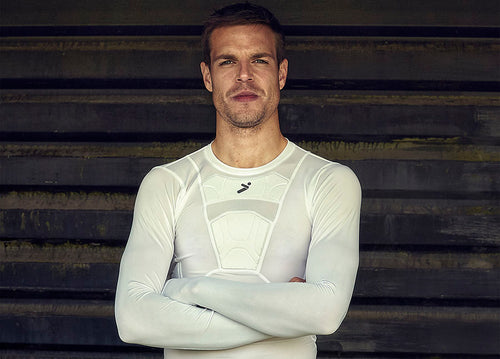
When it comes to soccer jerseys, what they’re made of matters more than you might think. It’s not just about looking good—it’s about staying comfortable, performing your best and reducing injury risks during the game. The right jersey can make a big difference in how you perform on the pitch. Let’s dive into the different materials used in modern soccer jerseys and why they’re designed to help you play your best.
Common Materials Used in Soccer Jerseys
Soccer jerseys have come a long way from the heavy, sweat-soaked nightmares of yesteryear. These days, it's all about high-tech fabrics that keep you cool, dry, and looking sharp on the pitch. Let's dive into the world of modern soccer jersey materials and see what's making waves in the beautiful game's fashion scene.
The Fabric Lineup:
- Polyester: The MVP of jersey materials. Lightweight, tough as nails, and wicks sweat like a champ.
- Nylon: The flexible friend that stretches and bounces back, perfect for those acrobatic saves.
- Spandex/Elastane: The secret sauce for that skin-tight fit that makes you feel like a superhero.
- Mesh: The breathy bits that keep you from turning into a human sauna during extra time.
Why Soccer Jersey Materials Matter
You might think, "It's just a shirt, right?" Wrong. The fabric of your jersey can be the difference between feeling like Messi or a mess on the field. Let's break it down.
Performance:
Modern jersey materials make it easier for you to move freely on the pitch. Forget about feeling like you're wearing a parachute – these fabrics are so aerodynamic, you might very well feel like Mbappe effortlessly gliding down the pitch. Okay, that might be a stretch, but the right fit can create the impression of less weight and help your agility. These high-tech threads maintain their shape longer, meaning their aerodynamic, wind-tunnel-like abilities remain intact longer as well.

And then there’s the issue of body temperature. Modern jerseys also incorporate fabric blends that help regulate your internal thermometer so you don’t overheat (or freeze). This is crucial to performance.
Comfort:
Remember those itchy, heavy jerseys that felt like you were wearing a wool sweater in a sauna? Yeah, those days are long gone. Today's jerseys are softer and lighter, so you get less of that hot, weighty feel on you. They’re also breathable, giving you more ventilation so you can air out during the game and not be soaked.
Injury Prevention
Now, you might be thinking, "How can a shirt prevent injuries?" Well, some brands (like us) are getting creative. They're sneaking in some ninja-level protection without making you look like you're wearing body armor.
These smart designs can help cushion the blow when you're going in for that heroic slide tackle or taking an elbow to the ribs. It's like having a secret bodyguard – but one that doesn't mess up your style game.
Storelli Jersey Materials
Here at Storelli, were not just playing the game; we're changing it. Our jerseys are like the Swiss Army knives of soccer wear – packed with features you didn't even know you needed.
Moisture-Wicking Fabrics
Our jerseys use breathable, sweat-absorbing fabrics. These materials pull sweat away from your skin, so you can stay cool and dry even on days that are scorchers
.
But it's not just about removing perspiration – these fabrics dry quicker fast as well, so you’re not a sweaty mess after the game. That means you stay comfortable whether you're in minute 1 or 90 of the match.
Impact Resistant Materials
Here's where we really shine. We've woven in materials that can shield you from impact forces resulting from player-to-player, player-to-ball, and other types of collisions.
These smart fabrics absorb shock and disperse forces, protecting you from injury. For example, our ExoShield Jerseys contain elbow padding, while our BodyShield tops are lined with elbow, shoulder and rib padding to cushion these sensitive areas from hits. So where you’re making a diving save or collide with a defender, you can walk out of these scenarios with less bruising and soreness.
Materials Matter
So there you have it, folks. The materials in your soccer jersey aren't just about looking good (though that's a nice bonus). They're working overtime to keep you cool, comfortable, and protected while you work your magic on the field.
Ready to upgrade your game? Check out Storelli's lineup of high-tech jerseys. They're not just shirts; they're your secret weapon for dominating the pitch. Don't just play the game – own it with Storelli.
Looking for the most durable, protective, and comfortable soccer tops for better performance? Browse through our selection of soccer jerseys and tops to elevate your game!























